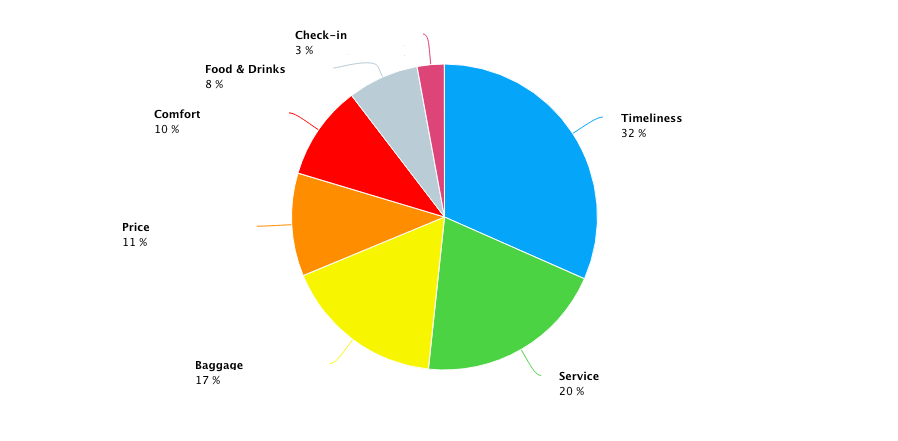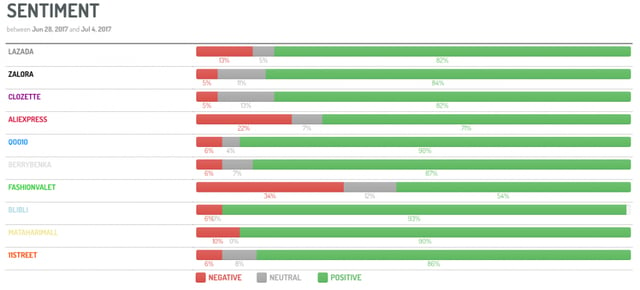3 Ways Social Media Monitoring Can Boost the Product Development Process
While social media listening has become a crucial part of a marketer’s arsenal, how can insights gleaned from social media be interpreted to serve other business goals, such as product development?
Product development refers to the process of conceptualising, designing and creating a product. It can be split into 2 categories:
- Product Creation: Creating an entirely new product to add to a brand’s existing line up
- Product Improvement: Enhancing a feature, or overhauling a product or service entirely to better serve customers’ needs
Earned media, from forum conversations, to non-sponsored reviews shared on blogs and social media, is rife with genuine customer sentiment and receptiveness towards a particular product.
Here are three ways how social media monitoring can boost the product development process:
-
- Developing and improving products and features that truly serve customer needs and wants
- Identifying new technologies to acquire or partner with
- Benchmarking and tracking competitors’ developments
1. Developing and Improving Products and Features that Truly Serve Customer Needs and Wants
From electronics to cosmetics, all products undergo extensive research and testing before the final outcome is presented to customers. Whether brands are releasing an entirely new product, fine-tuning current models or upgrading a bestseller, predicting the best product or upgrade to introduce is crucial to maximise sales.
How?
Social media listening can serve as a channel of market research, as it helps R&D teams gain real-time and honest insights on:
- Which features are being used and discussed the most
- Customer sentiment toward certain products or features
- How new products and features compare to past offerings, or offerings by competitors
- Whether products are meeting customers’ expectations
Case Study
A Southeast Asian transportation and logistics startup wanted to determine how they could improve user experience on their mobile app. Using social media listening, the product team detected trends in user behaviour and motivations for using the app, as well as which features were the most utilised. From there, they were able to understand the strengths and weaknesses of their user interface, as well as identify specific areas on the app to improve on.
2. Identifying New Technologies to Acquire or Partner With
Product innovation relies on leveraging cutting edge technology to take your products to the next level. Besides developing such technologies in-house, product teams can identify new vendors to grow an ecosystem of partners who can strengthen their offerings.
How?
Social media listening can aid the above mentioned efforts by:
- Identifying new or emerging vendors who are being highlighted by trade publications
- Tracking the development and potential of various technologies available
Ensure product innovation is moving in the right direction by pinpointing possible gaps where customer needs or wants are not being delivered.
Case Study
An international business networking platform monitored public user conversations online, and found professional training resources to be the leading need. This led the company to acquire an educational video website, as well as launch customised professional training packages to serve different groups of users. By “listening” to their users, the management was able to discover needs that were previously undetected. This in turn informed their decision on which partner to acquire, which allowed them to diversify their offerings to meet their customer's needs and wants.
 Social listening chart showing breakdown of airlines customers' concerns by volume.
Social listening chart showing breakdown of airlines customers' concerns by volume.
3. Benchmarking and Tracking Competitors
To truly stay on top of the game, companies must not only consider their own line-up of technologies, partners and products, but also those of their competitors. Being able to tell where you stand in relation to your competitors, as well as predict future product developments, is crucial in securing the brand’s position as an industry leader.
How?
Companies can keep ahead of competition by monitoring social media to:
- Benchmark product feedback and customer sentiment across the industry
- Detect weak signals on imminent industry and market disruptions before competitors, and what competitors are planning, based on strategic hirings, partner acquisitions, and technology developments
Case Study
An American technology manufacturer uses social media listening to compare customer reviews of microprocessors manufactured by themselves and their competitors to detect which features and functionalities were most important to users. With these insights, the R&D team were able to prioritise development of their microprocessor specifications to make them higher performing in areas most important to their customers, thus driving them to the top of the competition.

In Summary
For product development teams, social media insights are treasure troves of clues of what features and concerns are at the top of mind for customers. This in turn can boost the product development process, by informing organisations on what to develop or fine-tune on products to serve customers' needs and wants.
Ready to start optimising your product innovation with social media insights? Schedule a demo with our social media experts today.
Credit: photo header by Richard Clyborne of Music Strive
Written by Melissa Chue
Melissa is a digital advocate who loves diving into the latest trends in digital and social media. Since joining Digimind’s marketing team in 2015, she has written studies for over 15 industries in Asia Pacific. When she is not telling stories about data, Melissa can be found exploring her favourite cafes and hangouts on Instagram @chuepachups.

